Head to Toe: What to Wear for Winter Biking at Every Temperature
Posted by Steve on 01/09/19
Last modified: 01/13/23
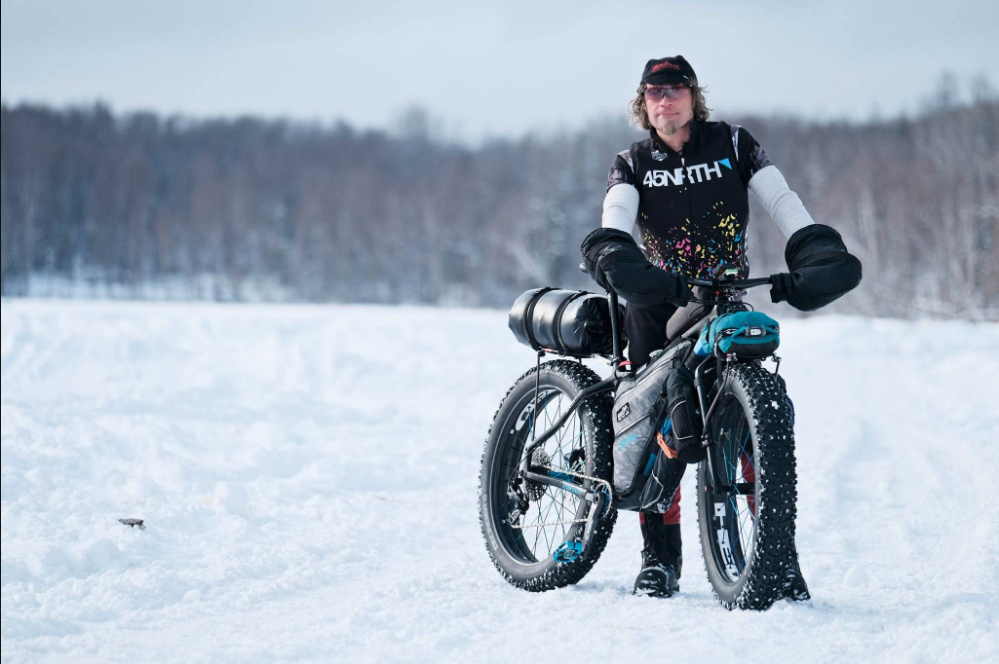
For the cycling enthusiast, winter riding can be just as enjoyable as an adrenaline-packed trail in the summer. The key is familiarizing yourself with the right preparation strategy and examining what to wear in cold weather whether you’re on a road or fat bike.
Cycling is a lifestyle, but finding the right winter cycling gear can seem daunting for everyone. From the winter commuter to the avid fat biker, the reality is you can use the same apparel for getting to work that you use while navigating a snowy forest on the weekends. Grab your bibs, and let’s take a look at what you should wear when the temperature drops.
Best Cold Weather Cycling Gear for Specific Temperatures
As true northerners, we know the difference between chilly and downright cold. That’s why we had a handful of our experts tell us what they wear at six specific temperature ranges that our thermometers will hit throughout the season.
- What to Wear When It’s -25° to -10°F
- What to Wear When It’s -10° to 0°F
- What to Wear When It’s 0° to 15°F
- What to Wear When It’s 15° to 25°F
- What to Wear When It’s 25° to 45°F
- What to Wear When It’s 45°F & Above
You can read more from our cold weather riding experts if you have a specific temperature you’re faced with today. Not only do they have insights on what to wear, they have clever cold weather hacks you need to start using right now.
For a more holistic view on what to wear in cold weather, let’s start with why it’s imperative you dress appropriately during winter riding.
The Fine Line Between Too Much & Not Enough
As if balancing on two wheels wasn’t hard enough, cold weather riders also need to walk the tightrope of dressing so we don’t get too cold or too hot.
Not enough clothes can lead to a shorter ride because, well, we’re cold. And if we’re stubborn riders, dealing with the cold for too long can increase the likelihood of permanent injuries like frostbite and joint pain.
Too many clothes can lead to overheating, which, oddly enough, can lead to getting colder at a faster rate. The problem is sweat. In cold weather, excess liquid (in this case sweat) will draw heat away from your body and make you colder. This will also make it difficult for your body to heat itself back up, causing you to expend more energy and run the risk of bonking during your ride.
The key is balance.
Even some “moisture-wicking” fabric can become too soaked to work. A strategy we like to use is finding the perfect outer shell to complement a skin-tight, foundational article of clothing. Think of it as a 1-2 punch combo to knock out the cold. But none of this matters if you don’t protect your head first.
There’s a widespread belief that you lose 50% of your body heat through your head. Science has debunked this myth, but they did find your face and head are 2 of the 3 most sensitive parts of your body to temperature change. So let’s turn our attention to our noggins.
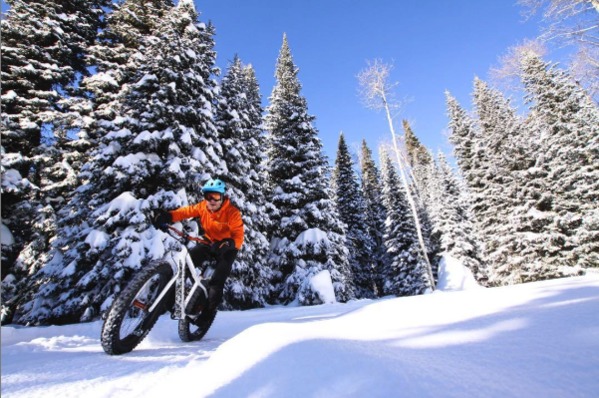
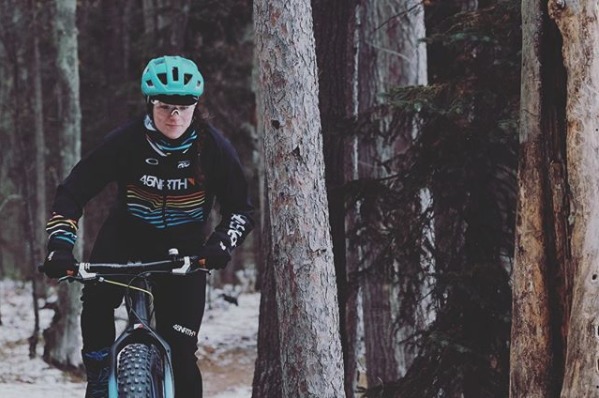
The Importance of Head Coverage
The amount of body heat you lose from your head varies from person to person. Components like head size and how much hair you have all factor into the exact percentage of body heat you’re losing.
Retaining body heat isn’t the only battle you’re fighting, however. Frostbite is one of the most prevalent silent antagonists during winter rides.
Frostbite is most likely to attack body parts that are farther away from your heart, in places that have less blood flow. This makes your nose and ears prominent areas in which body tissue can freeze at a quicker rate. The frostbite process is also accelerated when you’re on your bike due to the enhanced wind chill factor created by riding in cold temperatures.
To avoid these issues from slowing you down, cover your head when the thermometer is at 40 degrees or less.
Winter Cycling Hat Recommendation
The wind cutting around you as you ride is only going to make you more uncomfortable as you go. That’s why we go with the Stove Pipe Windproof Cycling Cap for head coverage. The longer fabric gives you plenty of wind protection for your ears and neck. It also has a wool liner to keep moisture out.
If wind isn’t an issue and you’re looking for a more breathable option, our Stavanger Lightweight Wool Cycling Cap is your answer. This 100% wool cap will wick moisture away and cover your neck and ears to keep your head protected from frostbite’s numbing ailments.
Don’t Forget Your Neck
The neck connects your head to your circulation source, so keep it warm to allow continuous blood flow to your dome. Our neck gaiter has a tall cut in the front that extends above your nose. It also features a longer neck that you can tuck into your jacket, leaving no skin exposed to the frozen air.
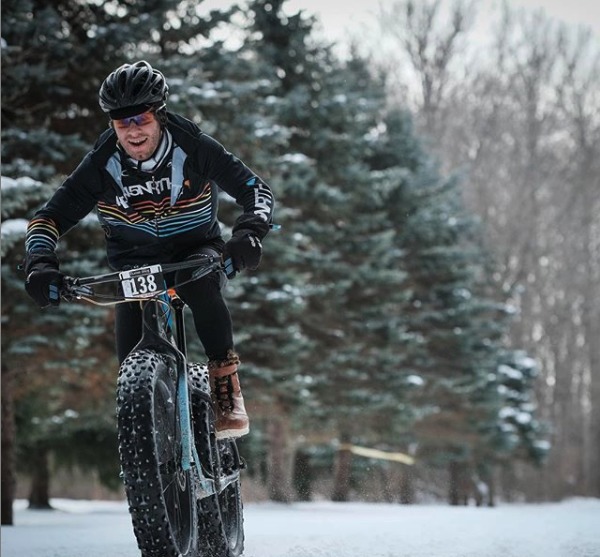
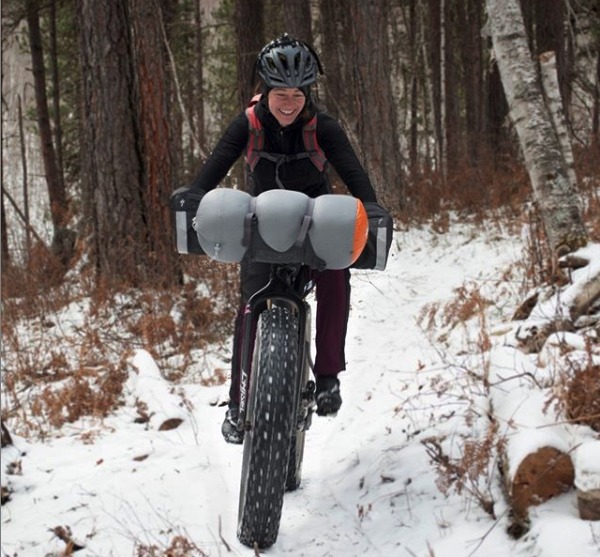
The 2 Steps to Layering
Remember that factoid we dropped on you earlier about not losing 50 percent of your body heat from your head? The truth is you can reduce your body’s temperature from any part of your skin when it’s exposed to cold weather.
However, your chest is packed with nerves and blood vessels. It’s also your body’s first line of defense for your body’s thermostat — your heart. Protecting your chest, core and back all play a role in regulating circulation throughout the rest of your body.
Protecting your body’s epicenter isn’t as simple as throwing a layer on and calling it good. Here’s a short, 2-step system we like to use.
1. Wicking Moisture
Wicking is an act defined as “to absorb or draw off without the assistance of external forces.” “Moisture-wicking fabric” is a popular sales term thrown around by nearly every apparel company. But does their cotton, synthetic microfiber or bamboo material actually pull moisture away from your skin?
We use a tight-fitting merino wool layer because it absorbs 30% of its weight in water before it feels damp. This makes it a premier insulator, so you can wick away sweat while maintaining your body temperature.
2. Finding a Breathable Outer Shell
The second layer is equally as important as a snug foundation layer. External moisture can soak synthetic microfiber and cotton, making it useless for keeping your skin dry. That’s why a waterproof membrane is vital for your base layer to function properly.
We use an ultra-thin layer of microporous material for our outer shells. It stops moisture from getting to your base layer and actually releases the leftover moisture that seeps through your moisture-wicking shirt.
Winter Cycling Jacket Recommendation
The formula for the perfect cold weather cycling jacket is something breathable, well-insulated and flexible enough for you to contort your body in a variety of positions while riding. Our Naughtvind Jacket checks all the boxes and also features reflective material for safer nighttime riding.
Protecting Your Hands
Having the right feel for the contact point with your bike can make or break a ride. That’s why it’s important to have the right gloves on your hands when you ride in cold temperatures.
In extremely cold weather, serious winter riders may attach pogies to their handlebars to give their hands extra protection from the elements.
Pogies act as hand insulators and contain enough area that the warmth from your hands actually creates a warm microclimate within the pogie.
The bar end plug on our Cobrafist pogies ensures they stay in place while riding. They also come with vents so you can control the warm air if your hands become too sweaty.
If you don’t feel comfortable with pogies, there are glove options that will keep your hands warm. The key is to be efficient in 2 areas: keeping your hands warm and providing enough dexterity to shift and brake freely.
Winter Cycling Glove Recommendation
If the temperature dips below freezing, turn to our Sturmfist 4. The 300g Polartec Alpha insulation will keep your hands cozy while the water-resistant goat leather gives you a secure connection to your handlebars, preventing slippage.
Leg Coverage Is Key to Keeping Toes Warm
If your toes are still getting cold while you wear thick boots, the problem is starting closer to your core. Having consistent blood circulation from your hips to your knees can do wonders when it comes to keeping your feet warm. If you don’t properly cover your legs in cold weather, you start to lose circulation and less blood will reach your feet to keep them warm.
We recommend wearing pants — or at least covering your knees — at temperatures as high as 60ºF degrees.
This doesn’t mean you need to throw on a layer of our Naughtvind Pants because those thermal bottoms will keep you warm if it’s below 0. Slide on something simple. Wearing a thin layer over your knees will help you retain body heat to keep your legs warm while maintaining optimal blood flow to your extremities.
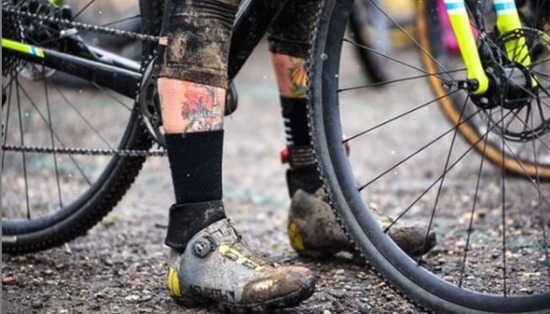
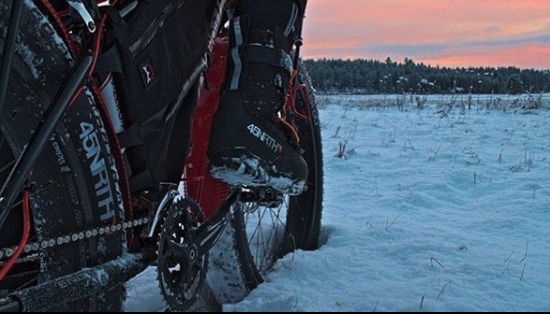
Preventing Winter Cycling Injuries
As cyclists, our bodies are our temples and the engines for our preferred mode of transportation. Joint pain in our knees and hips can halt our movement. It’s important to have the proper seat height so we’re not placing too much pressure on our patellas or over-stretching our hamstrings when we pump the pedals.
But joint pain can still arise when your bike fit is perfectly suited to your body type. Like with all winter activities, when it cools down, you are more susceptible to joint and soft tissue injuries. That’s why it’s imperative you warm up your muscles and joints before you ride. Here is a list of dynamic stretches we recommend before getting on your bike.
- Forward & backward lunges
- Air squats
- Walking knee to chest
- Upper-body twist
- Forward & backward arm circles
Lunges and squats will help warm up the joints in your knees and the muscle surrounding the most important part of your body.
Keeping these joints and muscles warm will also keep your knees functioning properly throughout your ride. To do this, grab a pair of bibs.
Winter Cycling Bib Recommendation
Cold weather cycling bibs can be the unsung hero for your winter riding. Our Naughtvind Bibs give you an extra layer of protection on your chest, back and legs when you’re riding through the teeth of winter’s elements. We combined our merino wool with polyester to be flexible with your body movements while keeping you well insulated.
Finding the Perfect Cold Weather Cycling Boot
Once you have properly covered your joints, it’s time to think about what will be covering your feet. You should aim to protect your feet like a steel-toed shoe while maintaining the same lightweight maneuverability of a sneaker.
Much like a pair of ski and snowboarding boots, your winter cycling boots should have a liner to insulate and promote circulation throughout your ankle and foot to keep your toes from going numb.
We offer boots that are compatible with clipless pedals. Our Ragnarök boot’s sole is designed to attach with a 2-bolt cleat for a secure ride. The sole also consists of a rubber compound and microscopic glass fibers that create protruding shards to improve your traction on icy, slippery surfaces when off your bike.
We also offer flat pedals with tall pins that grip shoes and boots well if you’re riding in overly slippery conditions and would prefer not to be connected to the bike like with clipless pedals.
Winter Cycling Boot Recommendation
The overarching theme around winter cycling gear is maintaining insulation and allowing flexibility. Our Wolvhammer boots embody this premise. From the rubber outsole to the aerogel embedded in the sole, these boots are going to keep your feet warm and you upright in the snowiest conditions.
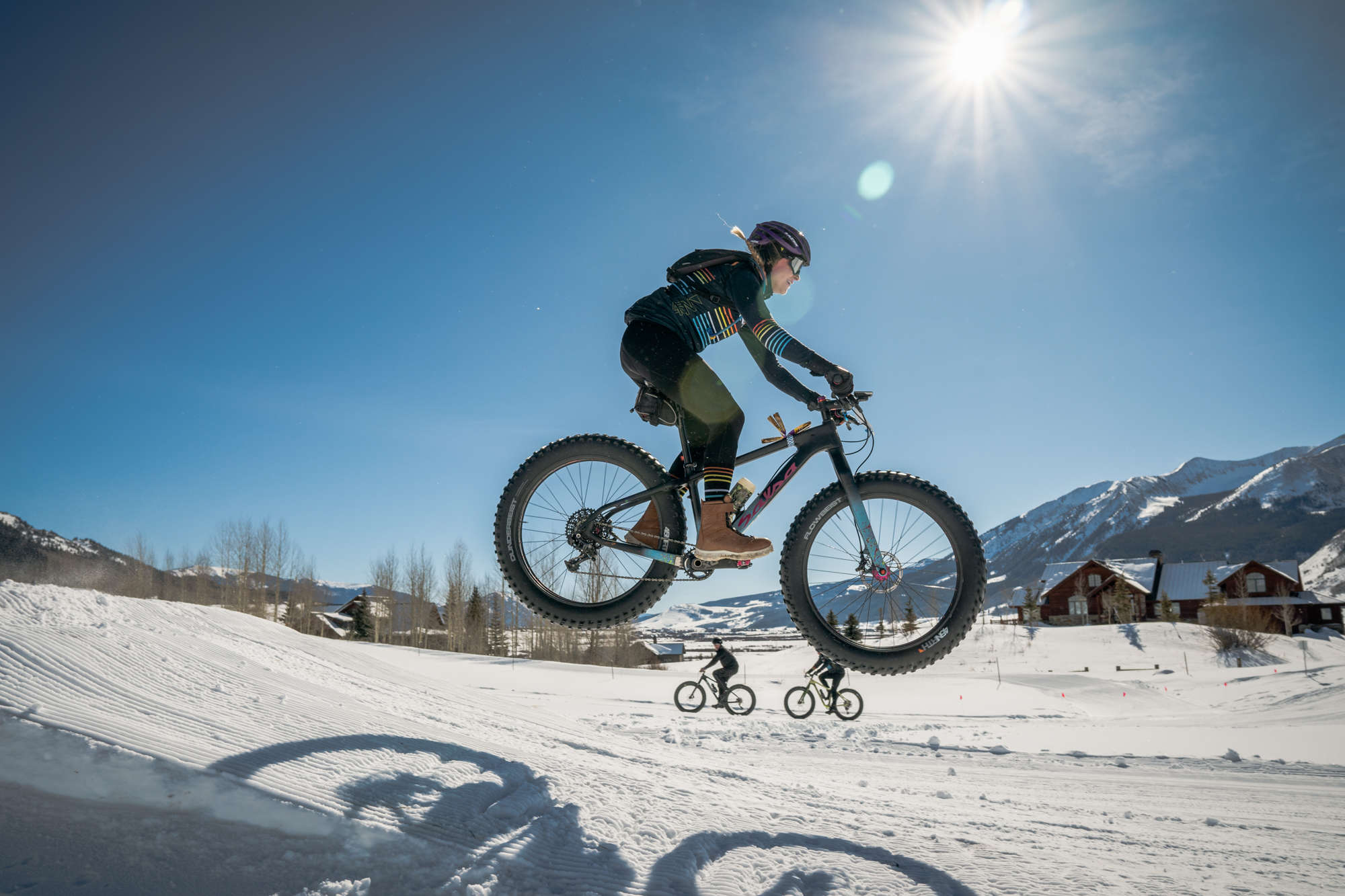
Cold Weather Cycling Safety Tips
Cold weather riding can be enjoyable, but keep the rules of nature in mind. Getting stuck in the cold can really suck (and be dangerous), so we’re going to leave these foundational winter riding reminders right here:
- Map your route in advance
- It gets darker sooner — wear reflective gear
- Place headlights and taillights on your bike
- Inspect your bike before your ride
- Ride with someone or tell a friend where you’re going
- Bring a repair kit and matches
- Fill your insulated water bottle
- Keep your cell phone in a warm place. Cold temperatures can drain batteries more rapidly.
Before tackling the frozen tundra, make sure you dress appropriately so you can maximize your satisfaction with the ride. With these tips, you can make your excursion just as enjoyable as it would be under a sweltering mid-summer sun. Let us know how your ride went and how you liked our equipment by dropping a review below your favorite piece of 45NRTH apparel.
For more cold weather cycling tips, check out what our winter riding experts had to say about what keeps them warm and comfortable.
Jump to:
